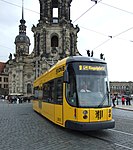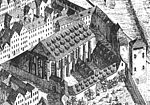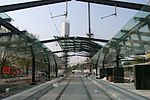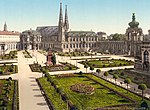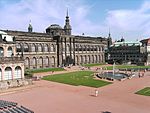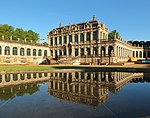Kingdom of Saxony
1806 establishments in Europe1806 establishments in Germany1900s in Germany1910s in Germany1918 disestablishments in Europe ... and 15 more
1918 disestablishments in Germany19th century in GermanyAC with 0 elementsFormer countries in EuropeFormer kingdomsFormer states and territories of SaxonyFormer states and territories of Saxony-AnhaltKingdom of SaxonyModern history of GermanyStates and territories disestablished in 1918States and territories established in 1806States of the Confederation of the RhineStates of the German ConfederationStates of the German EmpireStates of the North German Confederation

The Kingdom of Saxony (German: Königreich Sachsen), lasting from 1806 to 1918, was an independent member of a number of historical confederacies in Napoleonic through post-Napoleonic Germany. The kingdom was formed from the Electorate of Saxony. From 1871, it was part of the German Empire. It became a free state in the era of Weimar Republic in 1918 after the end of World War I and the abdication of King Frederick Augustus III of Saxony. Its capital was the city of Dresden, and its modern successor state is the Free State of Saxony.
Excerpt from the Wikipedia article Kingdom of Saxony (License: CC BY-SA 3.0, Authors, Images).Kingdom of Saxony
Marienstraße, Dresden Innere Altstadt (Altstadt)
Geographical coordinates (GPS) Address Website Nearby Places Show on map
Geographical coordinates (GPS)
| Latitude | Longitude |
|---|---|
| N 51.05 ° | E 13.733333333333 ° |
Address
Dreißig
Marienstraße
01067 Dresden, Innere Altstadt (Altstadt)
Saxony, Germany
Open on Google Maps

